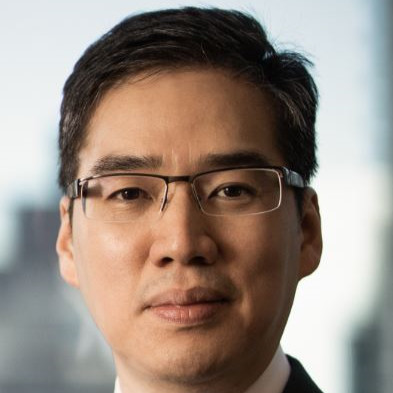Fund manager interview: Nelson Ilham, Artheon Global Credit Opportunities Fund
HFC’s Stefan Nilsson checks in with Nelson Ilham, Principal Fund Manager of the Artheon Global Credit Opportunities Fund, in Singapore for a chat about his business, investment strategy and the questions investors need to ask themselves as 2021 arrives.
You set up your own business and launched the Artheon Global Credit Opportunities strategy in 2019. What can you tell us about the strategy and why it differs from other credit strategies?
I was glad to have the opportunity to set up the fund together in close collaboration under our investment management platform, First Degree Global Asset Management. The firm is helmed by Dr Stephen Fisher and Anthony Morgan, both of whom are well-credentialed industry veterans. My fund’s strategy is unique in a sense that it constantly seeks value opportunities in the liquid fixed income/credit spaces that could replicate near-equity positive returns of around 10%-15% p.a. in USD over the medium term without taking equity-like volatilities. Moderate prudent leverage is deployed dynamically to take advantage of attractive opportunities during normal-to-favourable market contexts but could be reduced or hedged away when we find fewer value opportunities or at an onset of broad market volatility. Credit is also a very interesting asset class for us to have a built-in defensive absolute-return mode that targets a mere 4%-6% p.a. return in a tougher market context. We employ an extensive diverse set of macro signals for our agile portfolio positioning, making this credit strategy as probably one of the most dynamic “macro-aware” credit strategies out there.
You started your career in the US, but you now run a global investment strategy from your native Singapore. Are there hurdles you face because you are running it from Singapore rather than from, say, New York or London?
I’m grateful for having accumulated a broad perspective of the world, gained from my experience in both the West and the East. For my global credit strategy, it is actually an advantage to run this from Singapore, which is right in the heart of Asia, arguably the world’s most dynamic economic region which already produces slightly more than half of the world’s GDP (by purchasing power parity) and is on track to reach 60% by 2030, as according to the IMF. We see many more value opportunities here, with sustained availability of wider credit spreads despite the region’s supportive growth profiles and relatively better hard and soft economic infrastructures when compared with other regions. Having said that, we also spot attractive credit opportunities in other developed and emerging economic regions and do not wish to miss participating in some of those. Generally, up to half of our overall positioning would be in Asia due to inherent values we see here; the remaining would be across the rest of the world. This is in contrast with many global credit strategies run from places like New York or London which may have 70%-80% of their portfolio positioning in the traditional developed markets of North America or Europe, hence mimicking market issuance/trading volumes rather than true value opportunities available in the global credit space and which are currently getting burdened by low yields and spreads in those markets.
Prior to launching your own business, you built your fixed income expertise at major institutions such as HSBC and RBC. How different is it for you to now actually run money at your own firm from advising clients of big finance houses?
While managing fixed income desks at various major institutions, I directed much of my efforts and passion towards bringing the best possible performance and risk management to clients’ portfolios. That was akin to an investment management function, as opposed to more general, less-attached advisory and sales-related functions typically adopted at banking institutions. I developed and refined a flexible, less-constrained global credit philosophy as the flagship strategy, which I saw bring investment outperformance to clients who adhered to the strategy. AUM flowed in quite well following the performance. In a further collaboration with discretionary portfolio management counterparts within an institution I was at, the strategy was specifically implemented for various segregated mandate accounts and generated robust performances. Nevertheless, advisory-based client accounts still made up the vast majority of AUM in such institutions and generally advisory clients were not as systematically fast or responsive enough to fully replicate this advocated flagship strategy to realise its maximum potential. I also recognised the huge logistical and inherent structural problems of disseminating this flagship strategy throughout typically complex large institutions. With Artheon being an independent fund and whose sole emphasis is to manifest to its best extent investment performance from this flagship credit strategy for investors, I’m confident that the strategy can be implemented more efficiently and flourish further under this format.
2020 has been a year that no one expected a year ago. Have the year’s major macro events – such as the global pandemic, tumultuous US elections, ongoing Brexit issues and much more – in any way impacted how you view markets, risks and portfolio management?
The beauty of our diverse set of macro signals is that, from the perspective of the signals, major macro events happening in 2020 looked the same as the duration-led risk-assets selloff in 2018, the Fed tapering and subsequent commodities-led emerging-markets selloff in 2015 or the recurring bouts of European peripheral debt crisis in 2010-2013. The signals have been reliable enough to give us advance alerts on impending risks or opportunities. We can throw in many contexts to understand each market cycle or mini-cycle, but sticking with the signals in advance means enforcing strict disciplined processes in adding or reducing/hedging credit positions, leveraging or deleveraging, and ignoring noises that come and go. In early February 2020, I was fortunate enough to remember the scenes I watched in a 2011 movie called “Contagion”, which aptly portrayed a severe global pandemic. While markets were still quite complacent then in early February 2020, news about Covid-19 started to stream in; I thought what was portrayed in the movie might happen to a certain degree and I used that context to understand the macro signals employed within the strategy. The context was useful, but the signals had the final say on what was about to happen and how severe or mild it could be. That’s why I believe in daily real-time risk management and not having any entrenched views to distract us from that. I’m convinced that a dynamic risk-based strategy can beat typical buy-and-hold conventional strategies. The way our credit strategy views markets, risk and portfolio management have always been consistent and did not change at all in 2020. Contexts may come and go, but the signals stay put in our employ.
After this rollercoaster of a year, what are your predictions for 2021? Is it naïve to hope for some breathing space?
I don’t like to make specific predictions beyond 3-4 months, for the fear of getting entrenched in those and losing the dynamic portfolio and risk management approach which has been the key cornerstone of our credit strategy. What I like to do is to pose questions which could be used by us to understand potential value opportunities or risks in specific credits that may come up in the near future. The following questions would be for us to contemplate in 2021: Can the market stand on its own feet without the current assorted cocktails of liquidity from central banks? Will post-pandemic demand rebound create an inflationary shock, as producers regain upper hands from demand surge? Will certain speculative assets like some earnings-unproven tech stocks lose ground when liquidity pump tapers off and how will that affect the broader market of conventional assets? Will cheap liquidity drive aggressive debt-fuelled industry consolidations, increase the new giants’ pricing power and eventually drive up inflation? Or will such consolidations increase systemic risks when the giants overleverage themselves and struggle to manage bloated debts? When will a further stretch of fiscal debt reach its tipping point in some fiscally-strained developed economies? How will markets react to proposals of higher taxation to address pandemic-induced fiscal imbalances? How will the Biden administration set its policy tone in the first 100 days? Will it sound out conciliatory short-term aspirations tolerable by Republicans? Or will it instead promote major long-term four-year goals that may set it up for an immediate clash with Republicans? Will China’s tightening of the private sector eventually dampen entrepreneurship as a proven major growth driver or will it make the economic system more resilient instead? Will fintechs unknowingly increase systemic financial risks with implications to the broader market or are they just looking to muscle their way into traditional banking with a technological edge, eventually threatening stable earning sources of conventional banks? I have a lot more questions that we could ponder over, but we already have enough homework to go through from now until the start of 2021.









